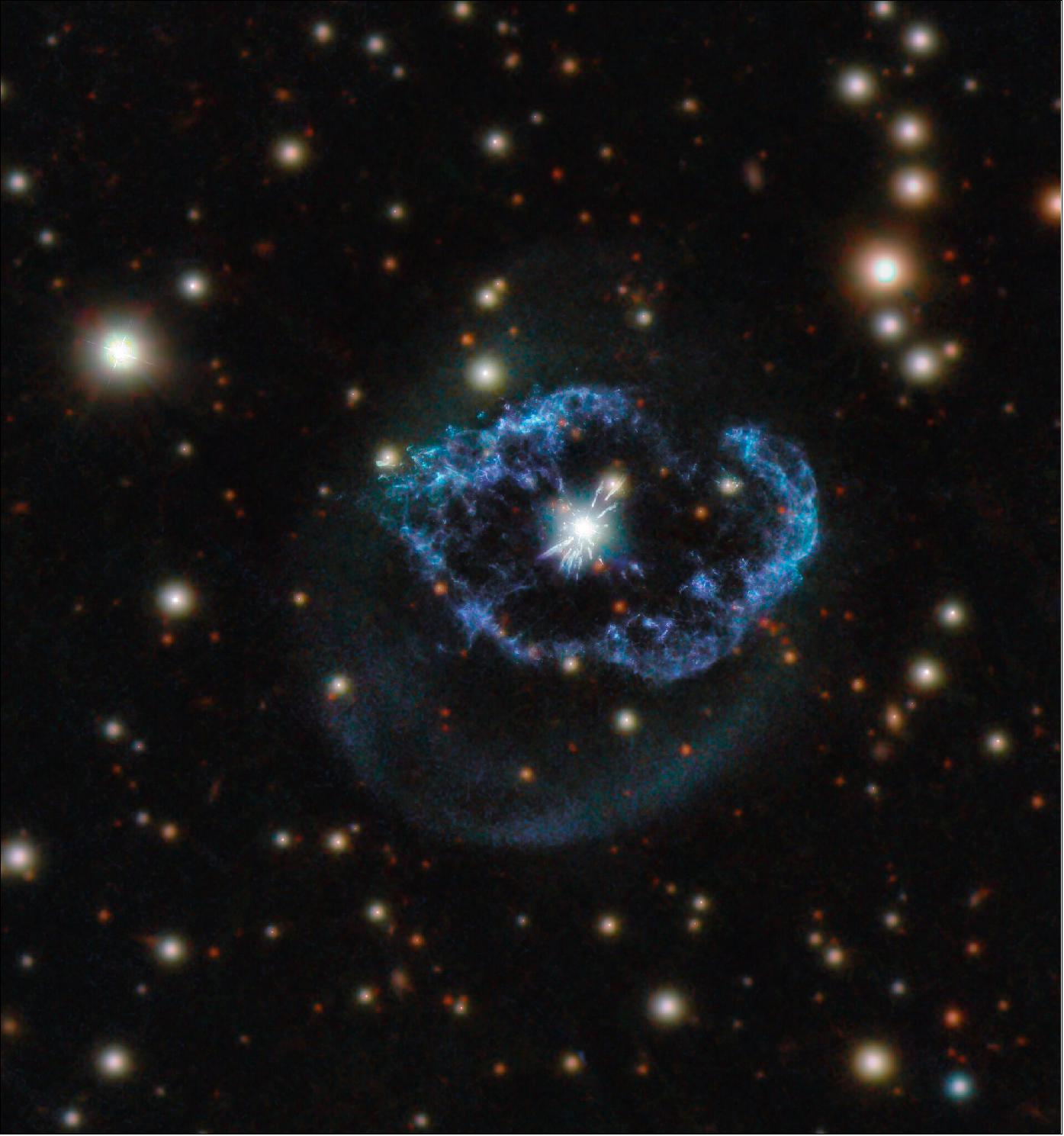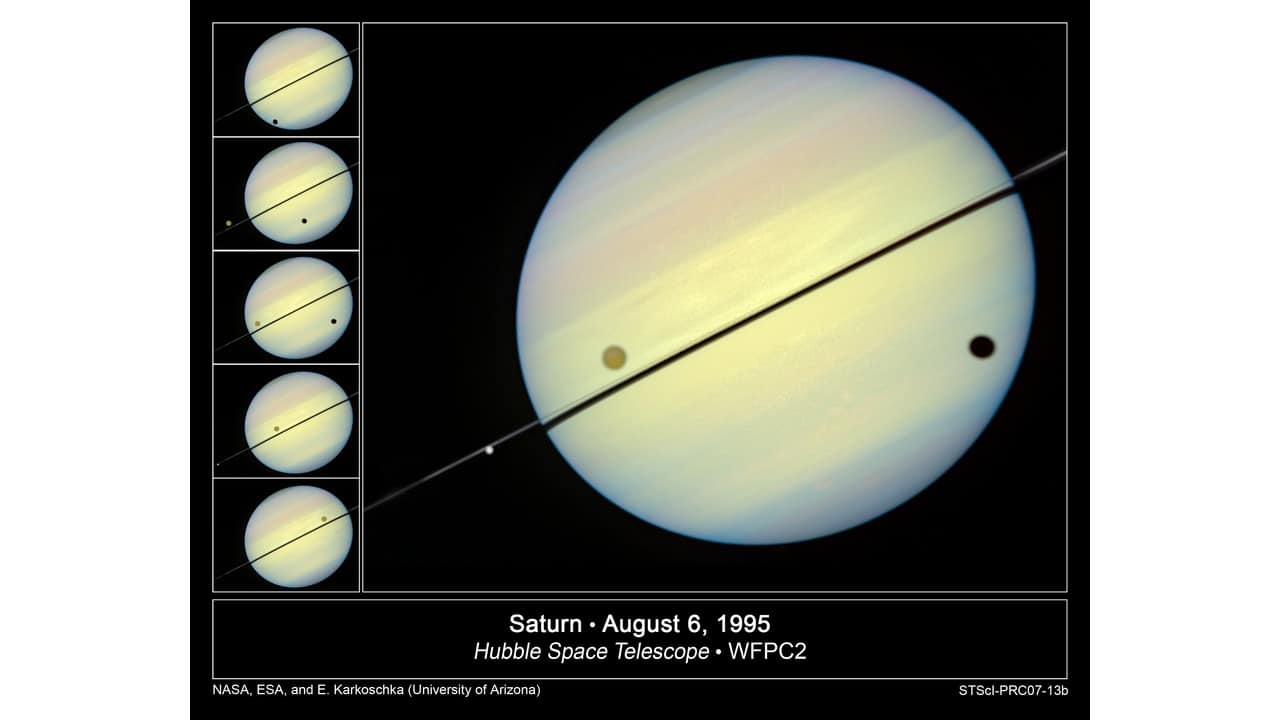The Hubble Telescope focuses on observing distant celestial objects, while the Kepler Telescope searches for exoplanets. Both telescopes have made significant contributions to our understanding of the universe.
The Hubble Telescope, launched in 1990, has provided breathtaking images and valuable data for astronomers. On the other hand, the Kepler Telescope, launched in 2009, has discovered thousands of exoplanets, greatly expanding our knowledge of planetary systems beyond our own.
Despite their different focuses, both telescopes have deepened our understanding of the cosmos and expanded the frontiers of astronomy. We will compare their features, achievements, and ongoing missions to showcase their unique contributions to our knowledge of the universe.
Hubble Space Telescope
The Hubble Space Telescope, often referred to as HST, is a space telescope that was launched into low Earth orbit in 1990.
History And Launch
The Hubble Space Telescope was developed by NASA with contributions from the European Space Agency. It was launched aboard the Space Shuttle Discovery (STS-31) in April 1990.
Notable Discoveries
- Distant Galaxies: Hubble made deep-field observations, revealing galaxies billions of light-years away.
- Black Holes: It provided crucial evidence for the existence of supermassive black holes at the center of galaxies.
- Exoplanets: Hubble played a role in the discovery and characterization of exoplanets.

Credit: www.eoportal.org
Kepler Space Telescope
The Kepler Space Telescope, launched by NASA in 2009, is designed to discover Earth-size planets in or near the habitable zone of their stars. Unlike the Hubble Telescope, Kepler is specifically intended for planet hunting beyond our solar system. It has been instrumental in the discovery of thousands of exoplanets, offering valuable insight into the diversity of planetary systems in our galaxy.
The Kepler Space Telescope, launched by NASA in 2009, aimed to survey a portion of our region of the Milky Way galaxy to discover Earth-size and smaller exoplanets in or near the habitable zone. The telescope observes the brightness of stars, and based on the data, scientists can determine the size, orbit, and possibly the composition of the planets around those stars.Mission Objectives
The primary mission objective of the Kepler Space Telescope was to explore the structure and diversity of planetary systems. Its goal was to determine the frequency of Earth-size and larger planets in or near the habitable zone of a wide variety of stars, thereby informing the future search for life in the universe.Significant Contributions To Astronomy
1. Exoplanet Discoveries: Kepler has detected thousands of exoplanets, significantly expanding our knowledge of planetary systems beyond our own. 2. Habitable Zone Candidates: It has identified numerous potential Earth-like planets within the habitable zones of their stars. 3. Understanding Stellar Lifecycles: Kepler’s observations have contributed to a better understanding of stellar lifecycles and the conditions necessary for planetary formation. In conclusion, the Kepler Space Telescope has made remarkable contributions to our understanding of the universe and the potential for life beyond Earth.Technological Differences
Technological Differences:
The Hubble Telescope and Kepler Telescope differ significantly in their optical designs and primary mission objectives.
Optical Design
The Hubble Telescope employs a reflecting optical system utilizing mirrors to capture images.
On the other hand, the Kepler Telescope features a refracting optical system using lenses for imaging.
Primary Mission Objectives
- Hubble Telescope: designed for general space observations, studying galaxies, stars.
- Kepler Telescope: focused on detecting exoplanets by monitoring star brightness variations.
Operational Variances
Operational variances differ between the Hubble and Kepler telescopes due to their distinct functions and technological capabilities. Hubble’s operational variances stem from its ability to capture images and data from deep space, while Kepler primarily focuses on exoplanet discovery and studying star systems within the Milky Way.
Operational Variances The Hubble Telescope and the Kepler Telescope are both renowned for their contributions to the field of astronomy. While they share the common goal of observing and gathering data from the cosmos, their operational variances set them apart. Let’s delve into the key differences that make these telescopes unique.Orbit Differences
The Hubble Telescope, a joint project of NASA and the European Space Agency (ESA), orbits the Earth at an altitude of approximately 547 kilometers (340 miles). This low Earth orbit allows it to capture clear and detailed images of celestial objects without atmospheric distortion. By circumventing the Earth in an elliptical orbit, the Hubble Telescope provides a continuous view of different parts of the sky, capturing breathtaking images of distant galaxies, nebulas, and other cosmic wonders. On the other hand, the Kepler Telescope was launched by NASA specifically for the purpose of discovering exoplanets, which are planets orbiting stars beyond our solar system. Its operational variances include a heliocentric orbit, meaning it orbits the Sun instead of the Earth. Positioned approximately 149 million kilometers (93 million miles) away from Earth, in alignment with our planet’s orbit, the Kepler Telescope operates in what is known as the Earth-trailing orbit. This unique positioning allows it to monitor a particular patch of the sky, without interference from the Sun or the Moon, providing astronomers with valuable data on the occurrence and characteristics of exoplanets.Types Of Celestial Objects Studied
The Hubble and Kepler Telescopes have different target celestial objects due to their design and operational objectives. Hubble Telescope: With its remarkable imaging capabilities, the Hubble Telescope is primarily focused on observing and capturing high-resolution images of galaxies, nebulae, and star clusters. Its advanced instruments allow scientists to study the formation of stars, the evolution of galaxies, and the dynamics of celestial phenomena like supernovae and black holes. Kepler Telescope: The Kepler Telescope, on the other hand, is designed specifically for capturing the dim light emitted by exoplanets as they transit in front of their host stars. By continuously monitoring a specific region of the sky, this telescope has revolutionized the study of exoplanets since its launch in 2009. Through this groundbreaking mission, the Kepler Telescope has provided valuable insights into the prevalence, size, and orbital characteristics of exoplanets in our galaxy, opening up a new frontier in the search for habitable worlds beyond our own. In a nutshell, the operational variances between the Hubble Telescope and the Kepler Telescope are evident in their orbital paths and the types of celestial objects they study. While the Hubble Telescope offers us awe-inspiring images and goes beyond our galaxy, the Kepler Telescope focuses specifically on exoplanets, expanding our knowledge of the celestial bodies beyond our solar system. Together, these two telescopes have played a crucial role in unraveling the mysteries of the universe and broadening our understanding of what lies beyond our own cosmic neighborhood.Legacy And Impact
Both the Hubble Telescope and Kepler Telescope have left a lasting legacy and made a significant impact on the field of astronomy. Their revolutionary contributions have not only transformed our understanding of the universe but also paved the way for future space exploration.
Revolutionizing Astronomy
The Hubble Telescope has undoubtedly revolutionized the field of astronomy with its groundbreaking observations and discoveries. Launching in 1990, this remarkable space telescope has provided us with breathtaking images of distant galaxies, nebulae, and other celestial phenomena. Its precise measurements and high-resolution images have helped scientists unravel the mysteries of the universe.
By studying the light emitted by stars and galaxies, the Hubble Telescope has contributed to our understanding of the age and expansion of the universe. Its observations have confirmed the existence of dark matter and dark energy, which are essential components in our understanding of the cosmos. Moreover, it has played a crucial role in determining the rate of expansion of the universe, known as the Hubble constant.
The Kepler Telescope, on the other hand, focused its efforts on a different aspect of astronomy. Launched in 2009, this space observatory had a specific mission – to search for exoplanets, planets located outside our solar system. Its primary goal was to determine how common Earth-like exoplanets are in the Milky Way galaxy.
Using the transit method, the Kepler Telescope monitored the brightness of over 150,000 stars, searching for small, periodic dips in light that indicate the presence of a planet crossing in front of its host star. This groundbreaking approach led to the discovery of thousands of exoplanets, confirming that they are indeed abundant in our galaxy.
Future Of Space Exploration
The impact of the Hubble Telescope and Kepler Telescope extends beyond their scientific discoveries. These telescopes have inspired awe and fascination among people of all ages, igniting a passion for space exploration. Their incredible images and findings have captured the imagination of millions and expanded our perspective of the cosmos.
The legacy of the Hubble Telescope has prompted the development of future space observatories, such as the upcoming James Webb Space Telescope. Scheduled to launch in 2021, this successor to Hubble aims to push the boundaries of our knowledge even further. With enhanced capabilities, it promises to provide us with unprecedented views of the early universe and potentially detect signs of habitability on exoplanets.
Similarly, the success of the Kepler Telescope has paved the way for future exoplanet missions. The Transiting Exoplanet Survey Satellite (TESS), launched in 2018, continues the search for exoplanets by monitoring a larger portion of the sky. Additionally, the European Space Agency’s upcoming PLATO mission will further explore exoplanetary systems, studying their architecture and potential habitability.
In conclusion, the Hubble Telescope and Kepler Telescope have both left a remarkable legacy and had a profound impact on astronomy. Their contributions have not only expanded our knowledge of the universe but also sparked curiosity and driven advancements in space exploration. As we look to the future, new observatories and missions built upon their success will continue to unravel the mysteries of the cosmos.

Credit: hubblesite.org
Challenges Faced
Challenges Faced:
Exploring the depths of space is no easy feat. Both the Hubble and Kepler telescopes faced their own set of challenges.
Technical Limitations
Issue: Technical capabilities can sometimes hinder the performance of these telescopes.
- Complexity of repairs due to location in space
- Limited lifespan of equipment
- Constraints on data processing and storage
Budget Constraints
Issue: Financial limitations can impact the scope and quality of operations.
- Allocation for equipment upgrades and maintenance
- Funding for research projects and data analysis
- Balancing costs for operation and exploration

Credit: www.livemint.com
Frequently Asked Questions Of Hubble Telescope Vs Kepler Telescope
How Does The Hubble Telescope Work?
The Hubble Telescope is a space-based observatory that captures images and collects data about celestial objects in orbit around the Earth. Using precise mirrors and instruments, it can observe objects with incredible detail, providing scientists with valuable insights into the universe.
What Can The Kepler Telescope Discover?
The Kepler Telescope is designed to search for exoplanets, planets that orbit stars outside our solar system. By monitoring the brightness of over 150,000 stars, Kepler can detect slight dips in brightness caused by planets passing in front of their host stars.
This data helps scientists understand the frequency and characteristics of exoplanets.
How Do The Hubble And Kepler Telescopes Differ?
The Hubble Telescope is in orbit around the Earth and captures images across the entire electromagnetic spectrum, while the Kepler Telescope is specifically designed to search for exoplanets and is located away from the Earth’s atmosphere. Both telescopes contribute unique observations and scientific discoveries.
Can The Hubble And Kepler Telescopes Work Together?
Yes, the Hubble and Kepler Telescopes can complement each other’s observations. For example, Kepler can identify potential exoplanet candidates, and Hubble can then further analyze and study these objects. Collaboration between these two telescopes enhances our understanding of the universe and its vast expanse of celestial objects.
Conclusion
Both the Hubble and Kepler telescopes offer valuable insights into space. While Hubble excels in capturing clear images, Kepler focuses on exoplanet discovery. Each telescope plays a unique role in advancing our understanding of the universe. The future of astronomy holds exciting possibilities with these remarkable tools.



